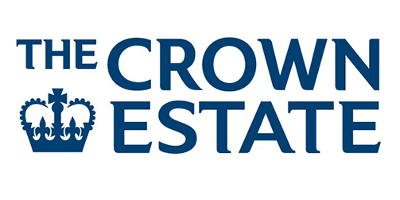SALT WORKS
SALT WORKS (50720)
- Easting
- 633700
- Northing
- 160700
Salt works established c.1558. Works still in use in 1851. Area now occupied by a sewage works.
13/07/2020
"Site of The Salt Works" is shown on the Ordnance Survey map from 1872, southeast of the Stonar Cut, also on maps from 1896, 1905, 1931 and 1946. On the OS map from 1872, southwest of the marked place, the part of the river Stour that flows northward is called "Old Salthouse Reach", with "The Salts" to the east of that part of the river, Broad Salts and Upper Salts are south of them. North of the marked site are areas of "Salt Marsh"- coastal wetlands flooded and drained by salt water, but also of "Saltpans", "Salt Pans" and "The Salts", continuing all along to the river mouth, these areas being possibly associated with the Salt Works. These areas are also marked on the OS map from 1905, 1931 and 1946 (1).
In The History and Topographical Survey of the County of Kent by Edward Hasted, Volume 1, published 1797, the author gave the same location: "the river Stoure continues its course round the isle of Thanet south-east and by south, and passing by Richborough castle, it flows on to Sandwich, where there is a bridge over it into the island, and having afforded a harbour for the shipping there, it takes a circle and flows almost due north, as it were back again, till it comes to the salt-works at Stonar, a little distance from whence, where the land is not more than forty rods over, a cut has been made for the benefit of sewing the levels above, for which an act passed in 1776, from this part of the river to the former part of it a little above Richborough-castle, the river having flowed from thence nearly in the shape of an horse-shoe, making a circuit of about four miles; Sandwich being situated midway between the two extremes of it" (2).
In the same publication it is said that there are "few manufacturers" in Kent, and works for the making of salt were mentioned as one of the active manufacturers (3).
In Volume 10 the author looked back on the beginning of exploiting salt in the area and says that in the time of the king Henry VII (1485-1509) the river Stoure (sic) continued to decay so fast, as to leave on each side at low water, a considerable quantity of salts, which induced cardinal archbishop Moreton, who had most part of the adjoining lands belonging to his bishopric, for his own private advantage, to inclose and wall them in, near and about Sarre. His example was followed by several owners of the lands adjoining (4).
In 'A short description of the Isle of Thanet : being chiefly intended as a directory for the Company resorting to Margate, Ramsgate, and Broadstairs, with a new map of the island' By Robert Edward Hunter, Surgeon (published 1799), after a brief history of Stonar is given, it is said that "some salt works of curious construction have been erected near this place: advantage is taken of the level, near the shore, to let the sea-water to pass into broad and shallow excavations, made for the purpose; where, having continued exposed to the sun until its most watery particles have been exhaled by the constant and gradual heat, the remainder is conveyed into large boilers, and chrystalized, in the usual manner, by evaporation" (5).
After describing the history of the growth and then gradual decline of Stonar, a publication from Archaeologia Cantiana Vol. 54 1941 says that the estate was sold in 1558, with the patronage of the church, to Nicholas Cryspe (of Quex) and his brother John Cryspe for £637. "To the Crispe family or to their advisers occurred the brilliant idea of turning to profit the conditions which had ruined Stonar, and they established on the seaward side the business of obtaining salt from evaporated seawater. It is stated in the Sandwich records for 1595 that "The Saultes at Stonard are assessed for £3". The work was carried on by tenants and in the early part of the seventeenth century a power of attorney was granted "to distress for arrears of rent for ye Salts"." The salt workers probably lived in Sandwich in the 1680s. As late as 1851 the Census returns show fifty-two persons were employed in the salt works. From the Crispes Stonar passed by sale to Sir George Rooke of St. Lawrence near Canterbury and in 1787 it was again sold to Charles Foreman of London. The official assessment of the yearly value remained at £23 based on the cultivated area. On the sale to Foreman the annual rent of the whole estate was estimated at £880 and the price at 25 years' purchase was £22,000. It is believed the saltpans at that time have been a profitable venture. As sources are used History of Sandwich by Wm. Boys from 1792, Archaeologia Cantiana XXI 1895 and the New Black Book of Sandwich (6).
The Salt Works are not in the Kent HER; the Historic Landscape Characterisation of the area is Creeks and Fleets, type 8.10 (7).
Part of the river Stour marked on the OS map from 1872 as Old Salthouse Reach, southwest of the marked site, is shown at Heritagegateway.org.uk as Old Salthouse Reach. An area of salt pans is noted in the HER just to the north west of the site, at Stonar cut (MWX43724) but is not clear whether this is referring to the same site (1, 8).
On the OS map from 1872 the location of the salt works is described as 'the site of the salt works' which could mean that the production of the salt on that location was abandoned somewhere between 1851 and 1872.
The site was part of the Richborough Port during the First World War (7).
(1)OS maps from 1872, 1896, 1905, 1931 and 1946 accessed via maps.nls.uk 05/06/2020 (2)https://www.british-history.ac.uk/survey-kent/vol1/pp272-293, accessed 04/06/2020 (3)https://www.british-history.ac.uk/survey-kent/vol1/pp265-271, accessed 04/06/2020 (4)https://www.british-history.ac.uk/survey-kent/vol10/pp152-216, accessed 04/06/2020 (5)https://play.google.com/books/reader?id=qKVfAAAAcAAJ&printsec=frontcover&pg=GBS.PA71, pages 70-72, accessed 05/06/2020 (6)https://www.kentarchaeology.org.uk/Research/Pub/ArchCant/Vol.054%20-%201941/054-06a.pdf, accessed 05/06/2020 (7)https://webapps.kent.gov.uk/KCC.HeritageMaps.Web.Sites.Public/Default.aspx, accessed 05/06/2020 (8)https://www.heritagegateway.org.uk/Gateway/advanced_search.aspx, accessed 05/06/2020 and https://webapps.kent.gov.uk/KCC.ExploringKentsPast.Web.Sites.Public/SingleResult.aspx?uid=MWX43724, accessed 16/07/2020
- Period
- Post-Medieval (1540 - 1901)
- Period comments
- The earliest date of the feature, as a year, if known
- 1558
- The latest date of the feature, as a year, if known
- 1558
- Monument Type - Broad
- SALT WORKS
- Monument Type - Narrow
- Monument Description
- Evidence Type - Broad
- Evidence Type - Narrow
- Evidence Description
- Object Type - Broad
- Object Type - Narrow
- Object Description
- Height OD (m)
- How accessible is the feature?
- Accessibility comments
Other records:
- NRHE Number
- 469555
- NT HBSMR Number
- Unknown
- HER Event Number
- Unknown
- External Link
- None
Over to you...
If you know there are errors in the original feature record above, you can edit the original record
If you would like to visit the feature and carry out a 'Feature Update Survey', you can prepare a 'Feature Update Survey' pack for this feature (in PDF format)
If you have completed a 'Feature Update Survey' for this feature, you can submit your 'Feature Update Survey'
If you want to use your smart phone to carry out the 'Feature Update Survey', you can download the CITiZAN smart app.
Feature Update Surveys
1 survey accepted and 0 pending.
Click on a survey to expand it.
- Date of survey
- 13th July, 2020
- Feature located?
- State of the tide
- Proximity to coast edge
- Coastal processes
- Is there a coastal defence?
- Other threats?
- If other, please specify
- How visible are the remains? ABOVE GROUND
- How visible are the remains in the face of the cliff, ridge or dune? IN SECTION
- Do you know if the feature is?
- What actions (if any) would you recommend for this feature?
- Do you have any other comments?








